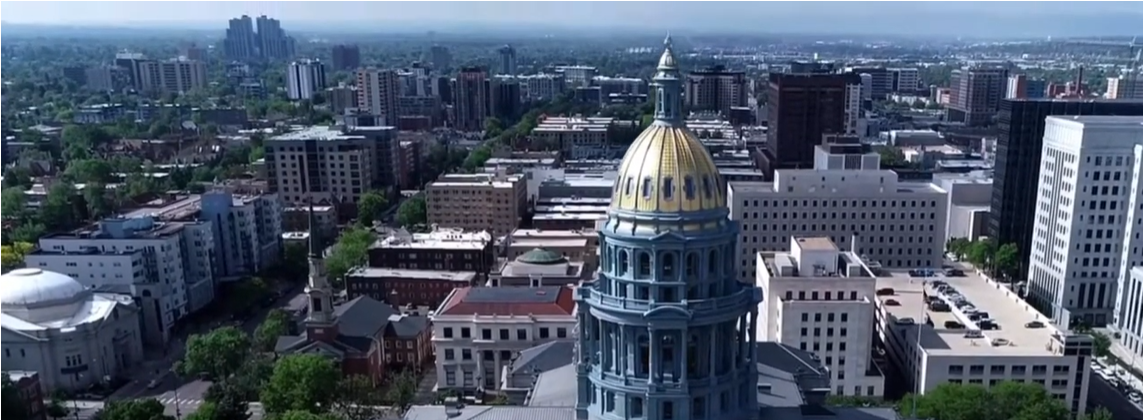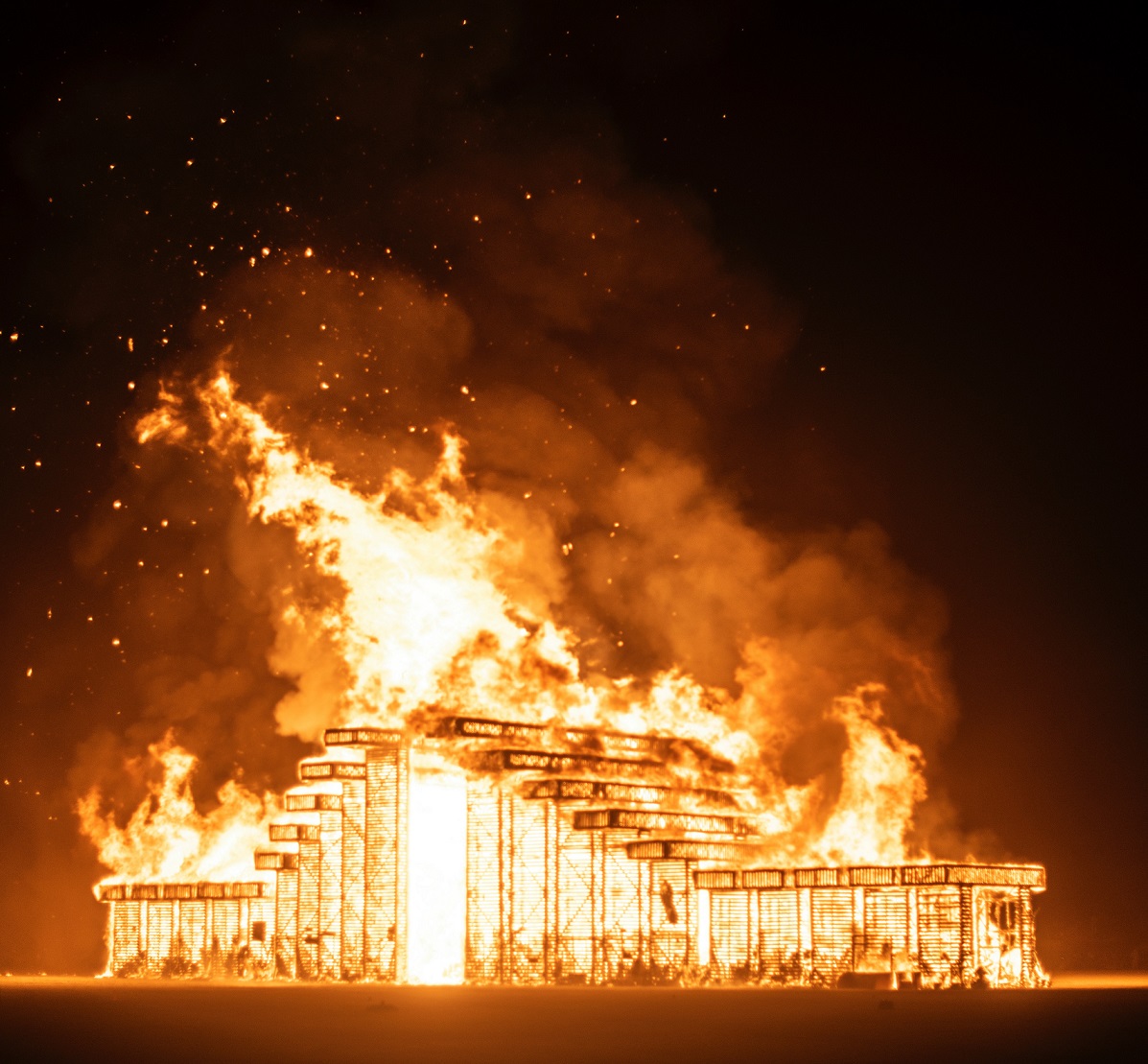On April 19, 1863, a devastating fire swept through the young frontier town of Denver, Colorado, leaving destruction and chaos in its wake. The Great Fire of 1863, as it came to be known, consumed much of the city’s wooden structures, including homes, businesses, and vital infrastructure. In the aftermath of the disaster, Denver faced a formidable challenge: how to rebuild and rise from the ashes. This article delves into the events leading up to the fire, the destruction it caused, the efforts to rebuild the city, and the lasting impact of this momentous event on Denver’s history and development.
Denver’s Early Days: A Frontier Town
In the early 1860s, Denver was a burgeoning frontier town in the Colorado Territory, driven by the excitement of the Colorado Gold Rush. The discovery of gold in the nearby mountains had attracted thousands of hopeful prospectors and settlers to the region. The city’s rapid growth was evident in its burgeoning population, makeshift buildings, and booming business activity. However, much of the construction was done hastily, with wooden structures lacking proper fire safety measures, setting the stage for the disastrous events that unfolded in the spring of 1863.
The Fateful Day: The Great Fire of 1863
On the afternoon of April 19, 1863, a small fire broke out in a carpenter’s shop on the corner of G and Holladay Streets (now 15th and Market Streets). Fanned by strong winds and dry conditions, the fire quickly spread, engulfing building after building. Despite the efforts of residents to contain the blaze, it raged for hours, consuming much of the city’s wooden structures and leaving nearly a third of Denver in ruins. The Great Fire of 1863 was a turning point in Denver’s history, forever altering the city’s landscape and prompting a determined effort to rebuild.
The Extent of Destruction
The Great Fire of 1863 left a devastating trail of destruction in its wake. Entire blocks of wooden structures, including homes, businesses, hotels, and saloons, were reduced to ashes. The fire claimed the city’s first schoolhouse, churches, and newspapers, wiping out some of the early symbols of Denver’s progress. The fire’s reach was felt across the social and economic spectrum, impacting both the wealthy and the working-class residents alike. In its aftermath, Denver was left in a state of shock and despair, facing an immense challenge in rebuilding the city from scratch.
Rebuilding Efforts Begin
Despite the overwhelming devastation, Denver’s residents quickly rallied to rebuild their city. The day after the fire, community leaders met to discuss immediate relief efforts and plans for reconstruction. Volunteers from neighboring cities and territories, including Central City and Colorado Springs, rushed to Denver’s aid, offering both financial and physical support. As the rebuilding efforts commenced, new building codes were implemented, requiring the use of more fire-resistant materials like brick and stone, signaling a shift in the city’s architectural landscape.
Challenges and Resilience
Rebuilding Denver was a monumental task that presented numerous challenges. The lack of building materials and skilled labor, coupled with financial constraints, complicated the reconstruction process. Yet, Denver’s residents demonstrated remarkable resilience and determination. The city’s merchants and entrepreneurs, eager to restore their businesses, were at the forefront of the reconstruction efforts. The arrival of new settlers and investment in infrastructure projects helped rejuvenate the city’s economy and instill hope for a brighter future. Denver’s post-fire period was marked by an enduring spirit of community, cooperation, and the belief that the city could rise from the ashes.
The Shift to More Resilient Architecture
In the aftermath of the Great Fire, Denver underwent a transformation in its architectural landscape. Rebuilding efforts focused on constructing more fire-resistant buildings using brick and stone. This shift in building materials not only improved fire safety but also lent a more substantial and lasting character to the city’s structures. Prominent buildings, such as the Tabor Opera House and the Windsor Hotel, emerged as symbols of Denver’s resilience and determination. The architectural changes not only served practical purposes but also contributed to Denver’s evolution into a more modern and sophisticated urban center.
The Legacy of the Great Fire
The Great Fire of 1863 left an enduring legacy on Denver’s history and development. The fire served as a catalyst for change, prompting the adoption of new building codes and the transition to more fire-resistant materials. The disaster also spurred the development of Denver’s fire department and emergency response infrastructure. Beyond the physical changes, the fire instilled a sense of community spirit and camaraderie among Denver’s residents, fostering a stronger bond among the city’s diverse population. The rebuilding efforts solidified Denver’s determination to overcome adversity, setting the stage for the city’s continued growth and prosperity.
Architectural Gems That Survived
Amidst the destruction, several architectural gems managed to survive the Great Fire of 1863. The Saint John’s Cathedral, completed just a few years before the fire, withstood the inferno, as a testament to its solid construction and fire-resistant materials. The Cathedral, with its Gothic Revival architecture, has since become an iconic landmark and an enduring symbol of Denver’s resilience.
Similarly, the Daniels & Fisher Tower, completed in 1910, rose majestically above the devastation of the fire. This iconic clock tower, inspired by the Campanile of St. Mark’s Square in Venice, stands as one of Denver’s tallest buildings and a beloved historic landmark. Its continued existence served as a reminder of Denver’s determination to rebuild and create enduring architectural treasures.
The Reimagined Denver: A Modern Metropolis
As Denver rebuilt after the Great Fire, the city took on a new character, embracing modern architectural styles and urban planning principles. The shift to brick and stone construction ushered in an era of grand buildings and ornate facades, reflecting Denver’s newfound prosperity and sophistication. By the late 19th century, the city was home to an array of architectural gems, including the Brown Palace Hotel, the Equitable Building, and the Denver City and County Building, all of which contributed to the city’s reputation as a modern metropolis in the American West.
Cultural Institutions and Civic Pride
In the wake of the Great Fire, Denver’s residents recognized the importance of preserving and promoting their cultural heritage. The reimagined city was adorned with new cultural institutions, including museums, theaters, and libraries, which became focal points for the community. The Denver Public Library, established in 1889, and the Denver Museum of Nature & Science, founded in 1900, stood as testaments to the city’s commitment to education and enlightenment. These institutions enriched the lives of Denver’s residents, fostering a sense of civic pride and reinforcing the city’s status as a cultural hub in the American West.
Expansion and Population Growth
The rebuilding of Denver after the Great Fire coincided with a period of rapid expansion and population growth. The discovery of silver in nearby mining towns, coupled with the development of the railroad network, facilitated the influx of new settlers and businesses into Denver. The city’s strategic location as a transportation hub further boosted its economic importance, attracting diverse industries and entrepreneurs. As Denver’s population grew, so did its infrastructure, with new neighborhoods, schools, and public amenities dotting the city’s landscape. The revitalized Denver emerged as a dynamic and prosperous urban center in the West.
The Legacy of Fire Safety
The Great Fire of 1863 left an indelible impact on Denver’s approach to fire safety and prevention. The devastating experience prompted city officials to establish the Denver Fire Department in 1866, providing much-needed organization and resources to combat future fires. Fire hydrants, fire stations, and improved firefighting equipment were introduced to enhance the city’s emergency response capabilities. Lessons learned from the fire informed building codes and urban planning, emphasizing fire-resistant materials and safe architectural practices. The legacy of the Great Fire’s impact on fire safety endures to this day, safeguarding Denver’s architectural treasures and its residents.
An Ever-Growing City
As Denver continued to grow in the years following the Great Fire, it evolved into a vibrant and diverse city that embraced architectural innovation and cultural progress. The 20th century brought the Art Deco movement, exemplified by buildings like the Paramount Theatre, while Mid-Century Modern designs left their mark on the city’s skyline, as seen in the Republic Plaza and the Daniels & Fisher Tower annex. Denver’s architectural landscape reflects a seamless blend of historic landmarks, contemporary marvels, and sustainable designs, embodying the city’s commitment to preserving its past while shaping its future.
The Monumental Bannock Street Murals
In recent years, Denver’s commitment to public art has flourished, and the Bannock Street Murals stand as a significant testament to the city’s artistic spirit. In 2019, a team of artists created a series of vibrant murals on Bannock Street, commemorating the Great Fire of 1863 and celebrating Denver’s resilience and diversity. These monumental murals transformed the façades of several buildings into a moving tapestry of history and culture, reiterating the city’s determination to rise from the ashes of the past while embracing a future that honors its roots and celebrates its ever-evolving identity.
The Great Fire of 1863 was a defining moment in Denver’s history, marking a turning point in the city’s growth and development. The destruction it caused presented Denver with a tremendous challenge, but the city’s residents rose to the occasion, rebuilding with determination and resilience. In its aftermath, Denver embraced a new architectural landscape, utilizing fire-resistant materials and modern designs that showcased the city’s progress and sophistication. The legacy of the Great Fire endures in Denver’s enduring architectural treasures, its vibrant cultural institutions, and its unwavering spirit of community and innovation, forever etched in the heart of the Mile High City.

